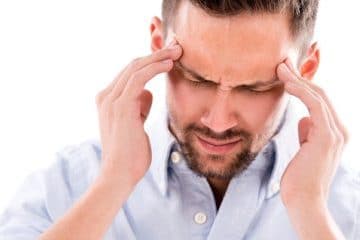Chiropractic is based on the theory that the body has self-healing and self-regulating mechanisms which optimise health and well being. Chiropractors assess the core issues of health as opposed to the signs of illness.
Chiropractic works with the innate intelligence of the human body which is co-ordinated by your brain and nervous system; this in turn co-ordinates millions of vital bodily functions through instructions and information sent through the nervous system to the organs and the cells of the body.
Occasionally physical, chemical and emotional stressors affect the fine tuning of this system compromising our health. Specific spinal adjustments assist in removing nerve interference and subsequently encouraging the body back to optimum health
Chiropractic is a drug-free hands on treatment suitable for the whole family. Our chiropractors will asses each patient as an individual and determine an appropriate treatment plan tailored to your needs. Most musculoskeletal conditions respond well to chiropractic adjustments within a few sessions, after which we will advise you on the best course of action to optimise healing and minimise recurrence of the problem to ensure you get the best out of your treatment.
When do I need Chiropractic?
Neck pain

Research shows that every year, up to one in five people will suffer from neck pain. In about half of the cases, the neck pain will subside, but for approximately half of the sufferers, the pain will either become chronic or recur regularly over the course of their life.
I suffer from neck pain Osteoarthritis

Osteoarthritis, commonly referred to as ‘wear and tear’ can affect any joint in the body, the most common joints to be affected being the hip and knee.
I suffer from osteoarthritis Tennis Elbow

Tennis Elbow is a relatively common overuse type condition that causes pain on the outside of the elbow and forearm. In only 5% of sufferers is it actually caused by playing tennis.
I suffer from a tennis elbow Low back pain

It is estimated that 85% of us will suffer some sort of low back pain throughout our life. In some cases the pain will simply go away; however it is common for the pain to return, or in very unfortunate cases never leave.
I suffer from low back pain Headache

Headache is one of the most frequent reasons for patients to seek medical advice, with around up to 80% of adults in the UK suffering from the condition. Women are more likely to suffer than men, and symptoms can begin as early on as in childhood. The most common type of headache is the tension-type headache.
I suffer from headache Sciatica

Sciatica is a common condition, causing pain and/or numbness, tingling, and/or weakness in the low back, buttock, hip, thigh and/or leg. The pain can be debilitating in nature for some sufferers, whereas others hardly suffer at all, or only with certain types of activities.
I suffer from sciaticaOur chiropractors
Sigrid de Vries
CHIROPRACTOR
Additional info
- Health
- Understanding Chiropractic
- Treatment
Here, at the clinic we strive for much more than just relieving back pain. Our aim is to help you restore to your optimum health, both physically and emotionally. Health is a wide concept, which influences every aspect of one’s life. Our bodies are self-healing but sometimes we are put under stresses and strains that disrupt the regulatory mechanisms that normally keep us well. These can be injuries, repetitive strain, faulty posture, mental stress, fatigue, infections or even incorrect breathing.
When this happens, any number of health problems may develop – back pain, neck pain, arthritis, and headaches to name just a few. For over 100 years chiropractors have been helping people get well without drugs or surgery.
At the clinic, we strive for the highest standards of care and service. Our chiropractors are registered with the General Chiropractic Council and members of either the British Chiropractic Association or United Chiropractic Association.
Nerve impulses flow from your brain and down your spinal cord. Pairs of nerve roots branch off from between each pair of spinal segments. These nerves link your brain with every organ, tissue and cell of your body.
Because of their close proximity to the moving bones of the spine, improper positioning or movement of spinal bones can irritate or compromise nerve function. This can lead to a range of symptoms, from just a sore back to headaches, pulled muscles, digestive problems, and increased fatigue.
In children, altered spinal function can manifest itself as aches and pains, colic, reduced concentration, altered behaviour, frequent infections (including ear infections and glue ear), growing pains, bed wetting and scoliosis.
Chiropractic aims to normalise spinal joint function thereby restoring normal nerve supply, allowing your brain to fully control every single cell in your body. Without this communication between the brain and the cells of your body, your brain cannot control proper functioning of the tissues, muscles, joints and organs.
The way in which your spinal function is altered and how this affects your body depends upon many factors including medical history, lifestyle, age, and previous trauma and is particular to the individual.
Your initial assessment will involve a full medical history and a relevant physical examination. Your Chiropractor will discuss with you what factors affect and compromise your present condition. Once a diagnosis has been established and explained to you, your chiropractor will compile a treatment plan which will be tailored to your individual needs.
The primary course of treatment used by your Chiropractor is specific Chiropractic adjustments. This will help to return individual bones to their proper motion and position and correct the neurological reflexes in and around your spine. There are many ways of using carefully directed and controlled pressure to restore better position and motion to ‘stuck’ or fixated (spinal) joints. This may require a quick thrust, or in other instances slow continued pressure. In some cases special tables or instruments such as the Activator are used. Chiropractors are fully trained in assessing and treating problems with all joints and soft tissues.
Some adjusting approaches can result in a ‘popping’ sound. This sound is created by the shifting of gas and fluids within the joints.

